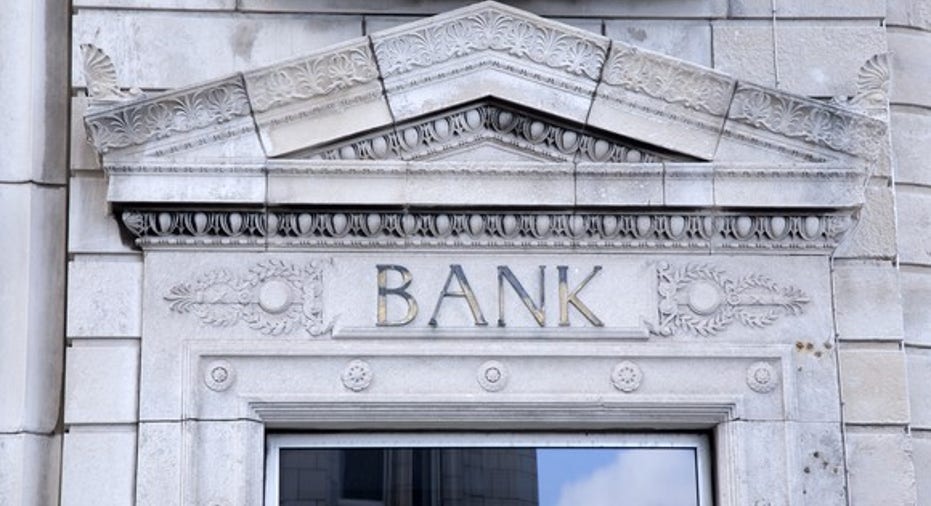Big Banks Face Plight Over Rule Rollbacks

Bank stocks have surged since the election on hopes that President-elect Donald Trump will roll back financial rules. But deregulation, for the biggest institutions at least, might come with a catch: tougher limits on borrowing.
Some influential voices in Mr. Trump's world insist banks should, as a quid pro quo for rolling back some regulations, maintain higher capital -- shareholders' funds that act as a cushion against losses but can also curb profits.
"Between Trump's populist victory and the calls for greater capital by...Republicans, it is far from given that the largest Wall Street banks would benefit from their reform efforts," said Mark Calabria, a former adviser to Senate Banking Committee Chairman Richard Shelby (R. Ala.), and now a fellow at the free-market Cato Institute.
Mr. Trump's picks of two former Goldman Sachs Group executives to run his economic team -- Gary Cohn, to head the National Economic Council, and Steven Mnuchin, for Treasury secretary -- might give Wall Street a powerful voice at the policy table. But at least two candidates for the job of Federal Reserve vice chairman in charge of bank oversight, arguably the single most powerful bank regulatory position in the world, are supporters of tougher capital rules. So is House Financial Services Committee Chairman Jeb Hensarling (R., Texas), who will next year be at the center of reshaping the 2010 Dodd-Frank financial-overhaul law.
Everyone agrees big banks borrowed excessively before the 2008 bailouts, and they should have been required to maintain more capital. Critics have said the new capital mandates have been set too high, constraining lending and economic activity. Many Democrats and conservatives disagree.
Current rules require banks to meet several different capital requirements. One is a "leverage ratio," which measures equity as a proportion of total assets. It's designed to reduce the chances a bank will fail by acting as a constraint against borrowing, or leverage. After the crisis, U.S. regulators required that big banks maintain a leverage ratio of at least 5%.
Some conservatives would go further. Thomas Hoenig, vice chairman of the Federal Deposit Insurance Corp. and a contender for the Fed job, favors a 10% leverage ratio.
Another candidate for the Fed job is John Allison , the former BB&T Corp. chief executive and ex-president of Cato, who recently met with Mr. Trump. In July, he told the House Financial Services Committee that Citigroup's leverage ratio should be raised to 10%, a sizable increase given it was 7.4% at the time. In his 2012 book on the financial crisis, Mr. Allison called Goldman the ultimate "crony capitalist" and advocated for a minimum 20% equity ratio in lieu of regulation.
Spokesmen for Citigroup and Goldman declined to comment
Mr. Hensarling has proposed giving banks relief from certain regulations if they meet a 10% leverage ratio. Steve Bannon, an ex-Goldman banker now serving as Mr. Trump's chief strategist, once compared precrisis banking to hedge funds. "Traditionally the best banks are leveraged 8 to 1," he said in a 2014 speech.
The conservative focus on the leverage ratio is a pushback against postcrisis policies, which set capital requirements according to complex formulas for "risk weights." That essentially gives bureaucrats a lead role in calibrating the weights for different assets based on their perceived level of riskiness, which in turn has a big impact on the allocation of credit. This system, based on a global regulation accord run by the Switzerland-based Basel Committee on Banking Supervision, contrasts with the simpler leverage ratio, which treats every asset the same
"There's a Republican idea that if you think you're going to fine-tune and get it right, you're insane," Mr. Calabria said, pointing to rules that had in effect classified U.S. subprime mortgages and Greek government debt as risk-fee.
Both Obama-appointed regulators and big banks disagree. They favor a belt-and-suspenders approach, with weighting as the primary way of reducing risk and the leverage ratio as a backstop. They say the leverage ratio alone is an overly crude tool for sophisticated 21st-century finance.
Greg Baer, president of the Clearing House Association, a trade group of large banks, has said the leverage ratio is "akin to setting the same speed limit for every road in the world."
A higher leverage ratio could be costly for banks. For the top five Wall Street firms, the extra equity required to meet a 10% leverage ratio would reduce their average return on capital from 12% to roughly 7% by 2018, according to Steven Chubak, a bank analyst at Nomura Holdings.
Barclays analyst Jason Goldberg estimates J.P. Morgan Chase alone would need an extra $107 billion of equity, which would represent more than a 40% increase from its current level.
Alternatively, the banks could boost their leverage ratios by shrinking their balance sheets.
This article was available on Pro Financial Regulation first, before being published to wsj.com. Separate subscription required for Pro Financial Regulation; more information here.
Write to Ryan Tracy at ryan.tracy@wsj.com



















